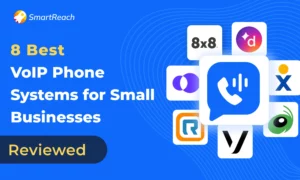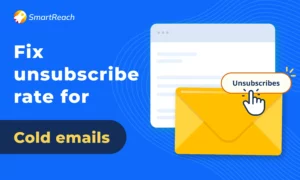Why Multiple Email Attachments Trigger Spam Filters (guide)
Wondering why emails with multiple attachments often land in spam?
It’s because spam filters treat them as risky based on size, file type, and trust signals.
Let’s understand in detail why adding multiple email attachments can flag your emails.
If you regularly send email attachments to co-workers or send them via cold emails, you must read this.
TL;DR: Why multiple email attachments lead to spam
- Multiple attachments = Malware Risk: A Common phishing method.
- High-risk file types: ZIP, EXE, JS, DOCM, etc.
- Email size increase: Triggers spam score thresholds.
- Behavior analysis: Recipients often ignore or delete such emails.
- Spammer patterns: Resemble fake invoices or mass emails.
- Firewall and bandwidth filters: Blocks large, unverified content.
- Missing authentication: No SPF, DKIM, DMARC = low trust score.
- Lack of file context: Unexplained files are seen as suspicious.
I have discussed these points in the section “Why do multiple attachments push emails SPAM?”. You can directly skip to that.
Does adding multiple email attachments actually send emails to spam?
Yes, adding multiple attachments can increase the likelihood of your email going to spam but the impact depends on the context.
Case 1) Internal work emails
For regular work emails sent within your company domain, attachments are less likely to trigger spam filters especially if your email server is properly configured.
However, issues can still arise if:
- You send large files repeatedly
- The file types are blocked by internal IT policies
- You include suspicious file extensions like .exe or .js
Most corporate spam filters will quarantine emails or prompt a warning if the attachments are considered high-risk.
Case 2) Cold emails (outreach to new email contacts)
For cold outreach, multiple attachments are a major red flag.
Cold emails already face low trust and engagement. Adding attachments:
- Increases spam score immediately
- Mimics mass spam or phishing behavior
- Gets blocked by corporate firewalls or mail servers
Result: Your email often skips the primary inbox entirely and land into their email spam folders.
Why do multiple attachments push emails SPAM?
Attachments in emails aren’t inherently bad—but multiple or suspicious attachments significantly increase the chances of your email being filtered into spam.
Let’s break down the exact technical and behavioral reasons why this happens.
1. Attachments are the #1 vector for malware and phishing
Historically, email attachments have been the most common method for distributing viruses, ransomware, spyware, and phishing attacks.
Because of this, spam filters are hard-coded to be cautious.
When an email contains multiple files, it resembles the behavior of malicious actors who try to sneak harmful files past security systems.
Spam filters instantly flag:
- Multiple file attachments with no context
- Files that are compressed (.zip, .rar)
- Attachments paired with vague or clickbait-style subject lines
2. Certain file types are considered high-risk by email spam filters
Spam filters not only just cares how many files you send but also care what kind.
Some file extensions are universally flagged because they’re frequently used to distribute malware or execute scripts on the recipient’s system.
High-risk file formats include:
- .exe – Executable files
- .js – JavaScript
- .vbs – Visual Basic scripts
- .zip, .rar – Compressed folders (often used to bundle hidden threats)
- .docm, .xlsm – Office files with macros
Even common file types like .pdf or .docx can get flagged if:
- The file is too large
- There are too many of them
- The content includes hidden links or scripts
In fact, some Outlook users report that even when they send themselves a PDF attachment via email that also get flagged as spam.
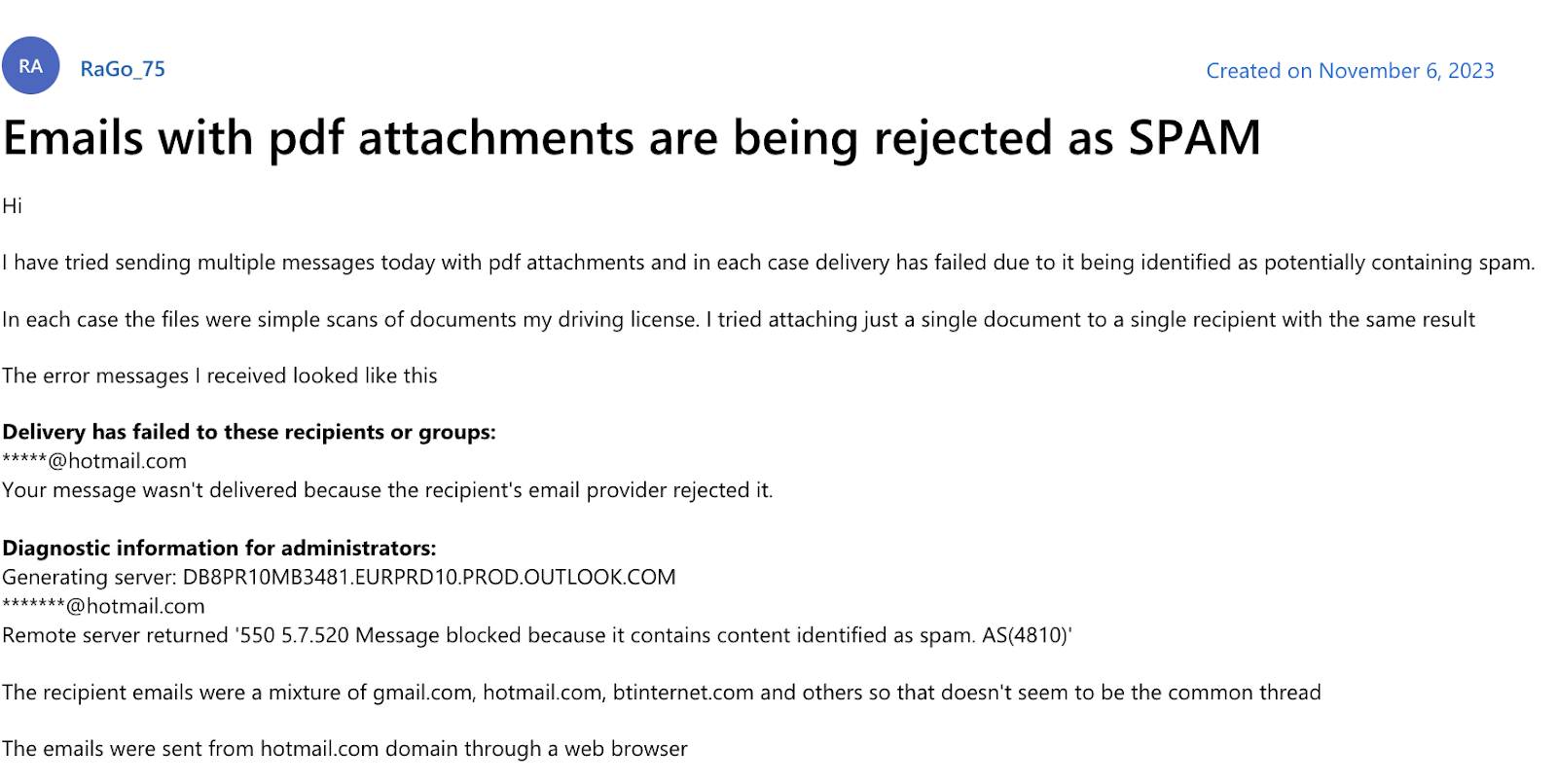
This shows even safe-looking email attachment files are not immune.
3. Multiple attachments increase the spam Score of an email
Spam filters like SpamAssassin, Gmail filters, and Microsoft Defender assign a spam score to every incoming email.
The higher the score, the more likely your email lands in the junk folder.
For example, this is how the spam score is usually calculated by the spam filters. (You can also try it for free using mail-tester)
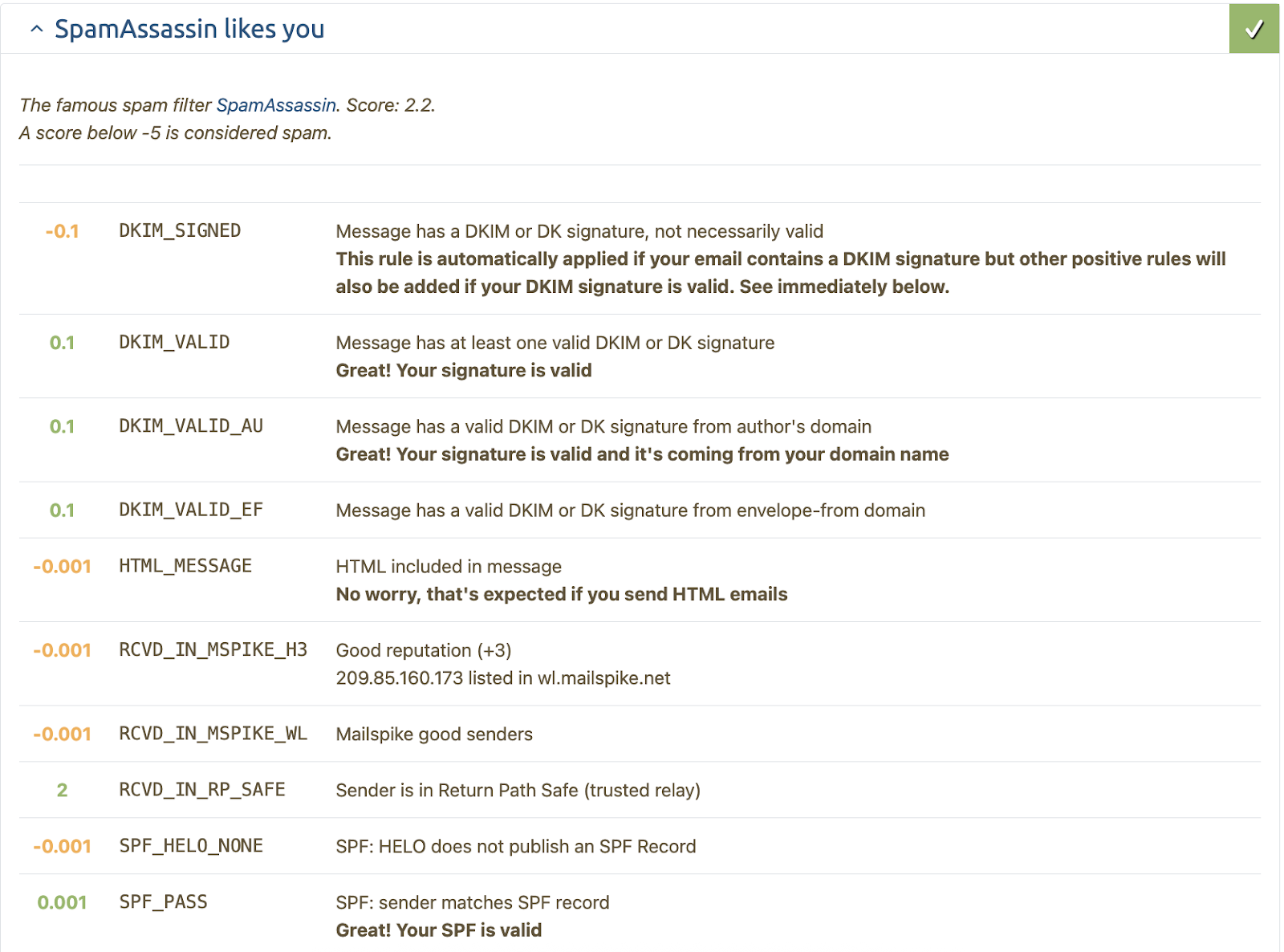
A common thumb rule is emails with over 2 MB of attachments or more than 2 files see the highest spam filtering risk.
That’s why cold emails with attachments almost always go to spam, especially if the domain isn’t warmed up or authenticated.
4. Spam filters use machine learning to analyze behavior
Modern spam filters continously learn from user behavior and engagement.
If recipients consistently:
- Ignore, delete, or report emails with multiple attachments
- Don’t engage (open, click, reply)
- Flag emails as “phishing” or “suspicious”
…the system starts assigning a higher spam probability to all similar future emails, including yours.
In essence, the more people distrust attachment-heavy emails, the more likely your message will get pre-emptively blocked.
5. Multiple attachments resemble mass-mailing patterns
If one thing leading email services like Gmail, Outlook, Apple mail all hate in common, it is mass-emailing.
Spammers and frauds often send mass emails with generic content and pre-loaded attachments like:
- Fake invoices
- Discount coupons
- Promo brochures
Here’s one example of such a fraud email with PDF attached.
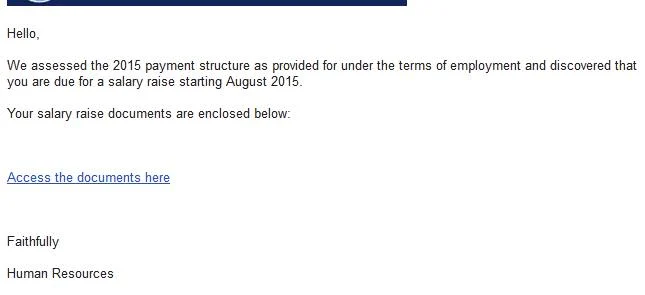
If your outreach email contains:
- Similar phrasing (e.g., “See attached invoice”)
- Several files without explanation
- A non-personalized message body
…it matches spammer patterns and hurts your sender reputation.
6. Larger emails cause bandwidth and server flags
Multiple attachments increase the total email size—and large emails (>5MB) create friction across multiple layers:
- ISP-level filtering flags heavy emails for throttling
- Corporate firewalls block unverified files
- Mobile devices deprioritize large emails to save data
This results in your email in either of these conditions:
- Being delayed (hurting time-sensitive delivery)
- Getting silently dropped
- Sent directly to spam to protect the server load
- Not loading properly on the recipient’s phone
7. Lack of context around the attachments triggers suspicion
Email attachments without a clear explanation, preview, or summary often get flagged.
Example:
- Email Subject: “Proposal”
- Email Body: “Please see attached.”
🚩 This triggers almost every red flag: vague content, unknown sender, and unexplained file.
It mimics common phishing tactics.
✅ Instead, explain:
- What’s in the attachment
- Why it’s relevant to the recipient
- That it’s safe and trustworthy
Even better? Don’t attach.
Link to a secure cloud folder (e.g., Gdrive, Dropbox) instead.
8. Unauthenticated email domains & mailboxes
Even one attachment can get flagged if your email domain isn’t properly verified using protocols such as –
- SPF (Sender Policy Framework)
- DKIM (DomainKeys Identified Mail)
- DMARC (Domain-based Message Authentication)
Now if you add multiple attachments without those email verifications?
Your emails almost guaranteed to hit spam.
Spam filters consider this combination a severe spam risk, especially in cold email campaigns.
Check if your email domains are properly authenticated using Mxtool box (free tool).
If you have not already authenticated, feel free to use the below guide.
Read more: How to set up SPF, DKIM & DMARC to keep emails out of spam
Get pre-authenticated domains & inboxes for cold emailing
Cold emails often go to spam because the sender’s domain isn’t authenticated with SPF, DKIM, or DMARC.
This lack of trust makes any emails especially those with attachments look suspicious to spam filters and kills campaign deliverability.
SmartReach solves with the new ready-to-use, pre-authenticated secondary domains and inboxes.
That means you don’t need to manually set-up the SPF, DKIM & DMARC records.
You will get pre-configured domains, Gmail and Outlook email accounts for cold on monthly billing basis.
These email inboxes come pre-warmed and fully verified, helping cold emailers avoid common deliverability issues.
With SmartReach, you can send cold emails confidently, knowing your domain won’t raise red flags even when attachments are necessary.
Try SmartReach.io for free and choose your email domains inside.
Frequently Asked Questions (FAQ)
Q1. Why do attachments trigger spam filters?
Attachments often trigger spam filters because they’re commonly used to spread malware, increase email size, and mimic phishing tactics. Spam filters treat multiple or risky file types as red flags.
Q2. How many attachments are safe to send in an email?
Sending one to two small attachments (under 2MB each) is usually safe. Anything more can raise your email’s spam score and reduce deliverability.
Q3. What file types are most likely to be flagged as spam?
Executable files (.exe), scripts (.js), zipped files (.zip), and macro-enabled documents (.docm) are the most likely to be flagged by spam filters.
Q4. Do large attachments affect email deliverability?
Yes. Large attachments increase your email size, which slows delivery and triggers spam filters. Use cloud links for files over 5MB.
Q5. Is it safe to send PDFs in cold emails?
PDFs are safer than other formats, but sending them in cold emails without personalization or authentication still risks spam filtering.
Q6. How can I avoid spam when sending attachments?
Use cloud storage links, keep attachments minimal, personalize your message, and authenticate your domain with SPF, DKIM, and DMARC.
Q7. Why are cold emails with attachments going to spam?
Cold emails with attachments often lack trust signals, domain authentication, and context, making them look like phishing or spam to filters.
Q8. Does using Google Drive or Dropbox links reduce spam risk?
Yes. Cloud links are safer than attachments, help reduce email size, and improve email deliverability by avoiding risky file formats.
Q9. Should I avoid sending attachments in outreach emails?
Yes. It’s best to avoid attachments in outreach emails. Use links instead to reduce spam score and improve open and reply rates.
Q10. What increases an email’s spam score with attachments?
Factors include file type, number of attachments, total size, poor domain reputation, lack of personalization, and missing SPF/DKIM/DMARC records.


